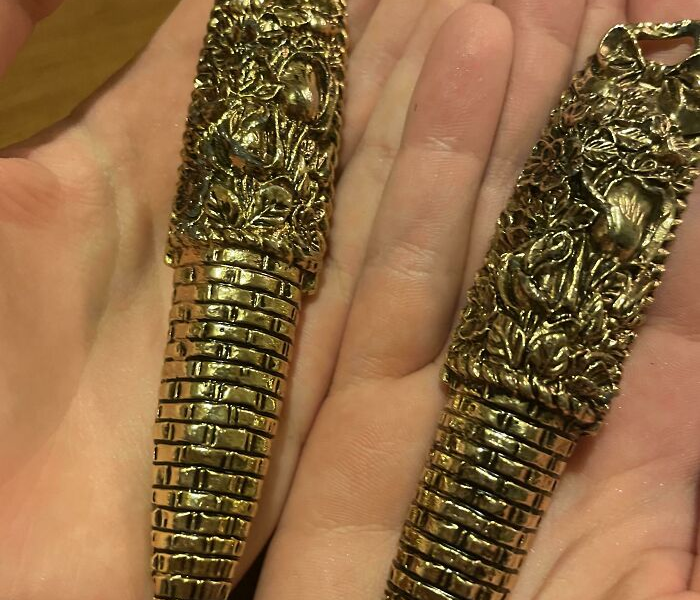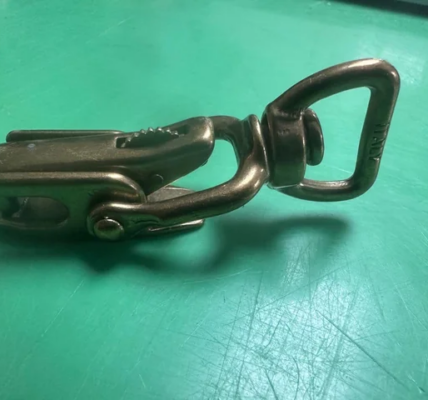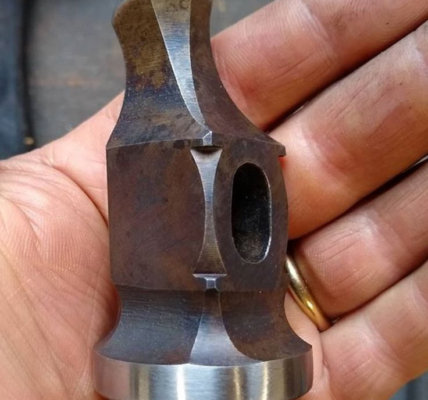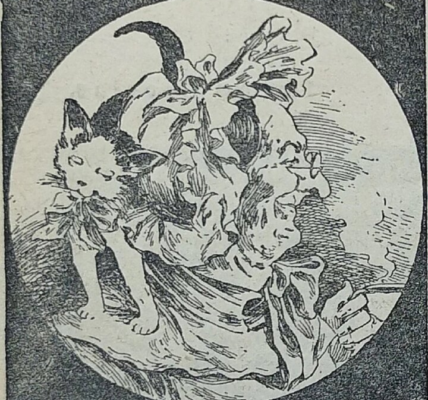When browsing through a thrift shop, you might come across some unusual items that spark your curiosity. Among the many interesting finds, dense metal objects hanging from chains could seem like a mystery to the untrained eye. These items, however, serve a fascinating and specific purpose in the world of timekeeping—particularly in mechanical cuckoo clocks. In this article, we’ll delve into what these dense metal items are, how they function, and the traditional beauty of the cuckoo clock mechanism.
The Purpose Behind These Dense Metal Items

The dense metal items you’ve found are actually weights that power mechanical cuckoo clocks. These weights are usually shaped like pine cones, and they play a crucial role in the clock’s operation. Mechanical cuckoo clocks, a staple of traditional German craftsmanship, rely on a system of weights and chains to keep time and trigger the charming cuckoo call that these clocks are famous for.
The weights perform two distinct but interconnected functions:
- Powering the clock mechanism – One of the weights is responsible for the regular timekeeping function, driving the clock’s hands to mark each passing minute and hour.
- Powering the cuckoo call – The other weight controls the cuckoo bird’s movement, enabling it to pop out of the clock and announce the time with its signature call.
How Do These Weights Power a Cuckoo Clock?
The mechanism behind these weights is relatively simple but incredibly effective. Cuckoo clocks rely on gravity to power their internal gears. Here’s how it works:
- Weights Hang on Chains – The metal weights hang on chains that are looped around gears inside the clock. The force of gravity pulls the weights down slowly over time.
- Turning Gears – As the weights descend, they turn gears that drive the clock’s timekeeping functions. The movement of these gears keeps the clock’s hands moving and triggers the cuckoo’s appearance at the right intervals.
- Rewinding the Clock – When the weight reaches the bottom of the chain, the clock needs to be rewound. To do this, you simply pull the other end of the chain, which raises the weight back to the top, allowing the process to start over again.
The Clock Mechanism and the Role of Weights
The internal workings of a cuckoo clock are intricate yet charmingly mechanical. Unlike modern clocks that rely on batteries or electricity, a mechanical cuckoo clock depends entirely on the energy generated by its weights. These weights usually descend slowly over the course of about 24 hours, requiring daily winding to keep the clock functional.
There are typically two sets of chains and weights:
- One for timekeeping – This weight controls the clock’s hands and ensures accurate timekeeping.
- One for the cuckoo bird – This weight drives the cuckoo bird’s movement, triggering it to pop out and chirp at the top of each hour.
In some larger or more complex cuckoo clocks, there may be a third weight, which is used to operate additional features like music or other mechanical elements.
The Historical Significance of Cuckoo Clocks
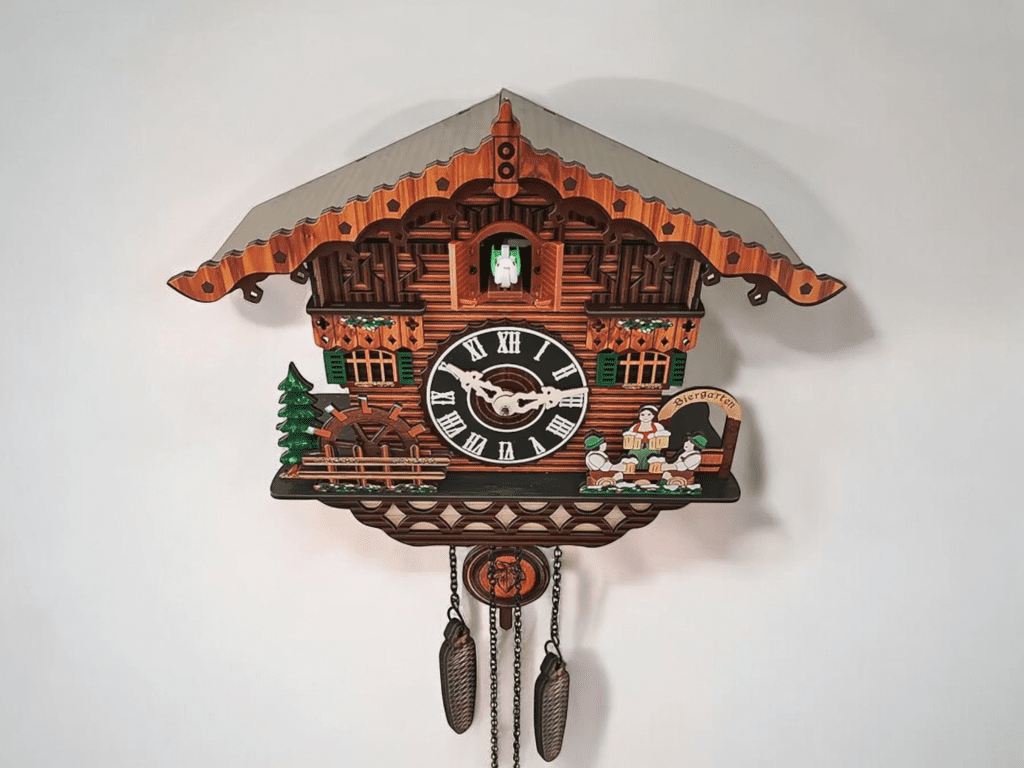
Cuckoo clocks have a long and fascinating history that dates back to the Black Forest region of Germany in the 18th century. These clocks became iconic for their craftsmanship, detailed wood carvings, and of course, the endearing cuckoo call. The weights you discovered are integral to the tradition and functionality of these beautiful timepieces.
The design of cuckoo clocks has remained relatively unchanged over the centuries, and the use of weighted mechanisms is part of what gives these clocks their old-world charm. Each weight is carefully calibrated to ensure that the clock keeps accurate time and that the cuckoo’s call is perfectly timed with the hour.
Common Designs and Materials for Weights
The weights on mechanical cuckoo clocks often take the form of pine cones or acorns, which are a nod to the natural beauty of the Black Forest. These dense items are typically made from cast iron, which gives them the heft required to keep the clock running smoothly.
The pine cone design isn’t just aesthetic—it also serves a functional purpose. The ridges on the pine cone create a textured surface, making it easier to grip when pulling the weight back up during the rewinding process.
How to Maintain and Handle These Weights
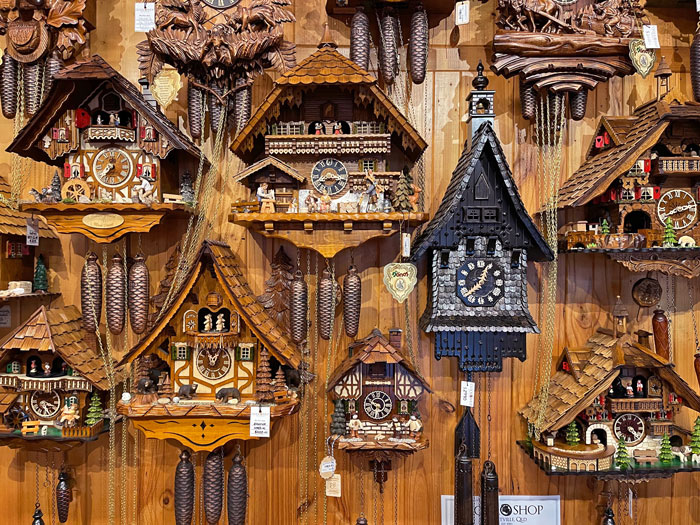
If you’ve stumbled upon these dense metal weights at a thrift shop and plan to use them with a vintage cuckoo clock, it’s essential to handle them with care. Here are a few tips for maintaining and using these weights:
- Check for Rust – Since these weights are made of cast iron, they can be prone to rust if not properly cared for. If you notice rust forming, gently clean it with a soft cloth and a rust-removing solution.
- Rewind the Clock Daily – If you’re using the weights with a functioning cuckoo clock, be sure to rewind the clock each day by pulling the weights back up to the top of the chain.
- Avoid Dropping – Cast iron weights are durable, but dropping them can cause damage to the clock mechanism or the floor they land on. Handle them with care to preserve their condition.
- Keep the Chains Smooth – Ensure the chains are not tangled or kinked, as this can disrupt the smooth functioning of the clock’s gears.
Conclusion: Uncovering the Charm of Cuckoo Clock Weights
The dense metal items you discovered are much more than thrift shop curiosities. They are integral components of traditional cuckoo clocks, powering the delicate mechanisms that have enchanted people for centuries. Whether you plan to use them with a vintage clock or simply admire them as historical artifacts, these weights carry with them a legacy of craftsmanship, timekeeping, and cultural heritage.
So next time you encounter these heavy metal pieces, you’ll know they are not just random objects—they are the key to bringing a cuckoo clock to life, one swing of the pendulum at a time.
